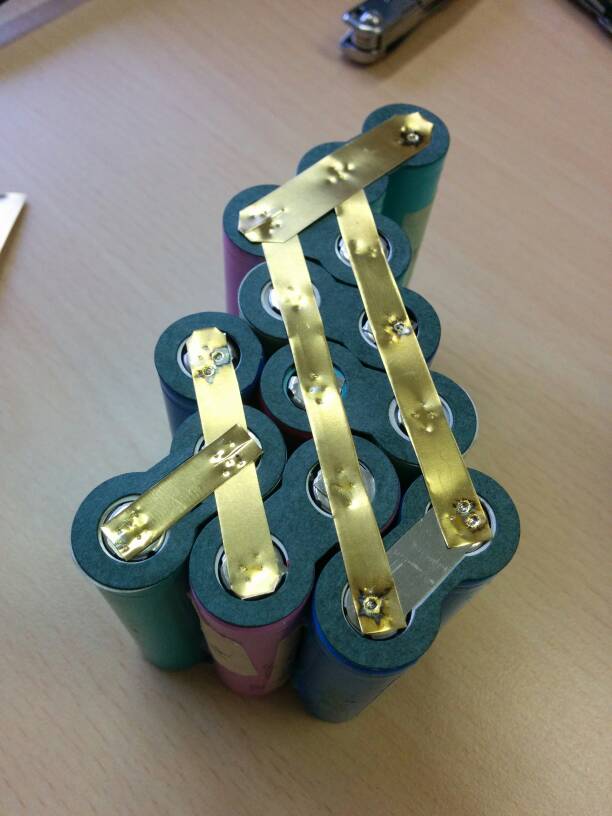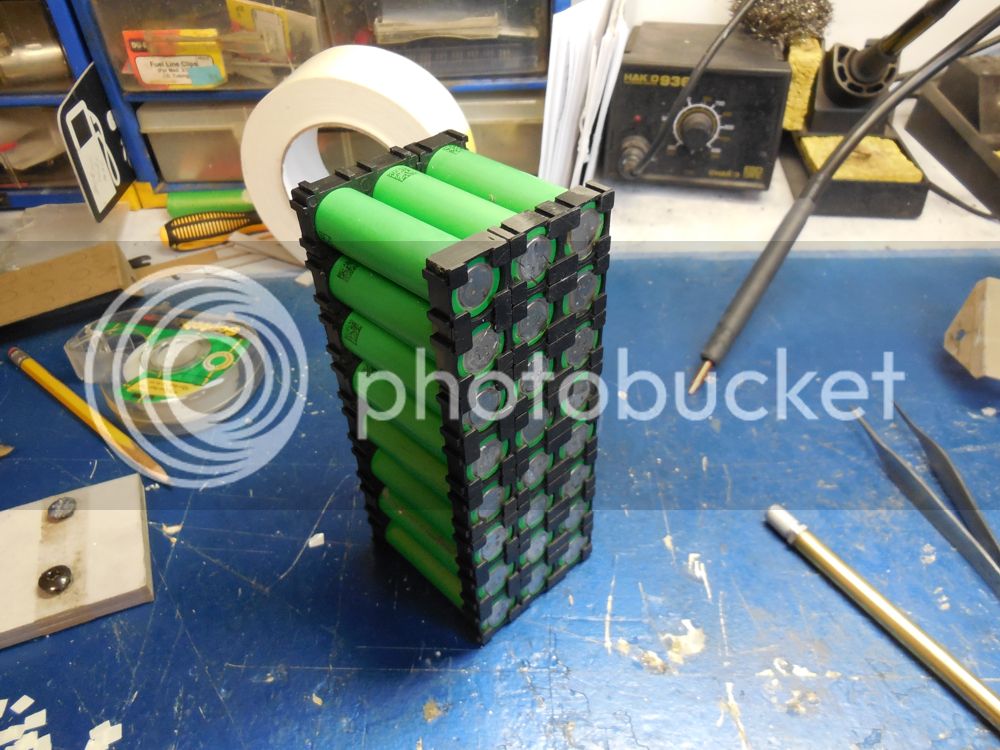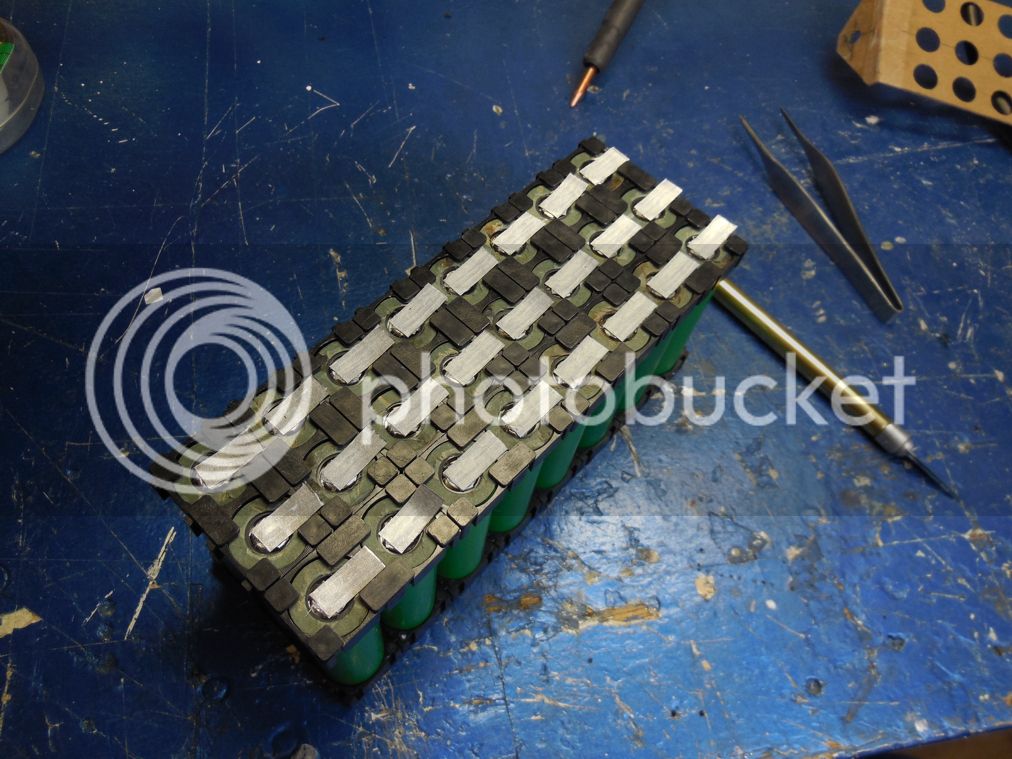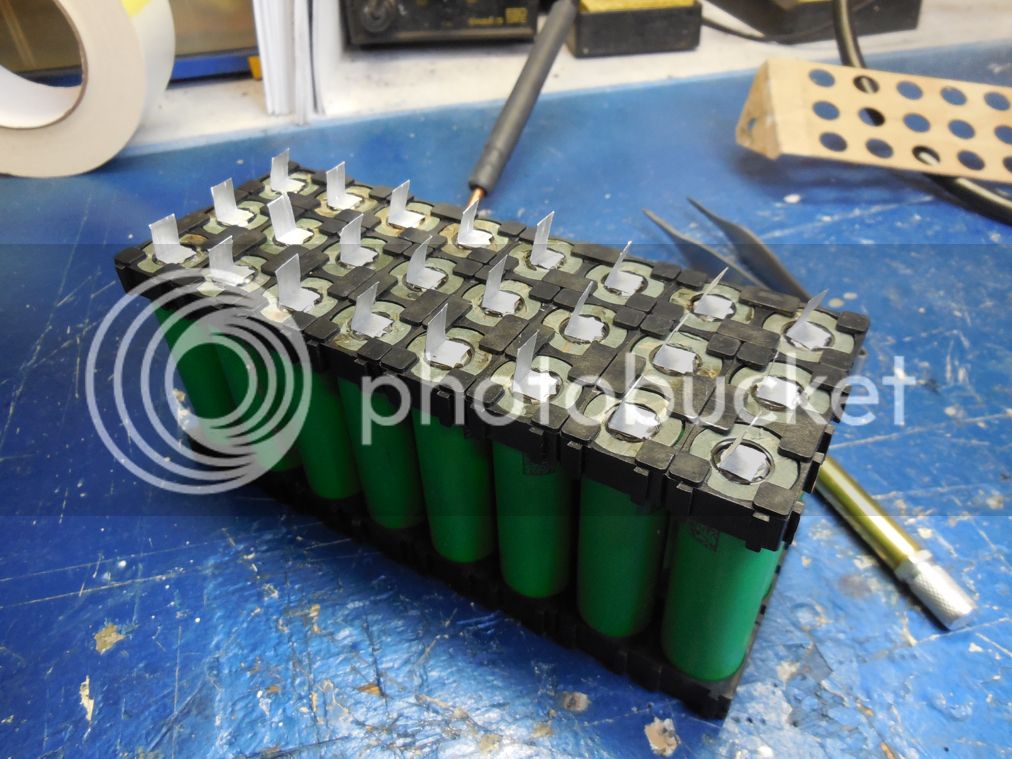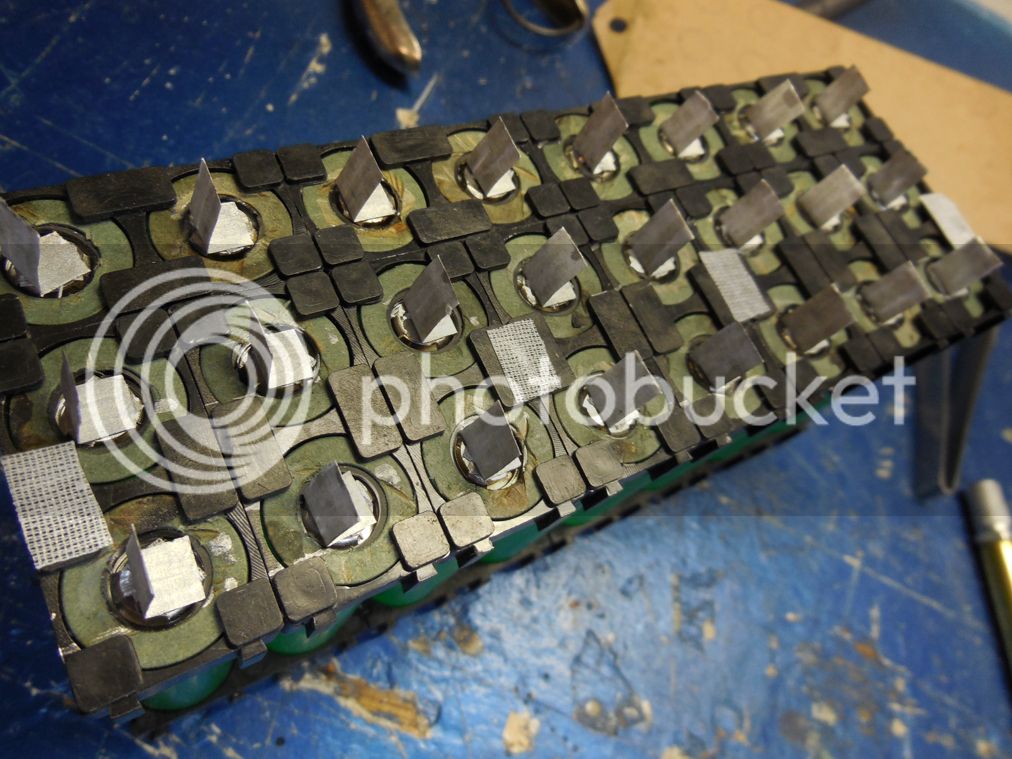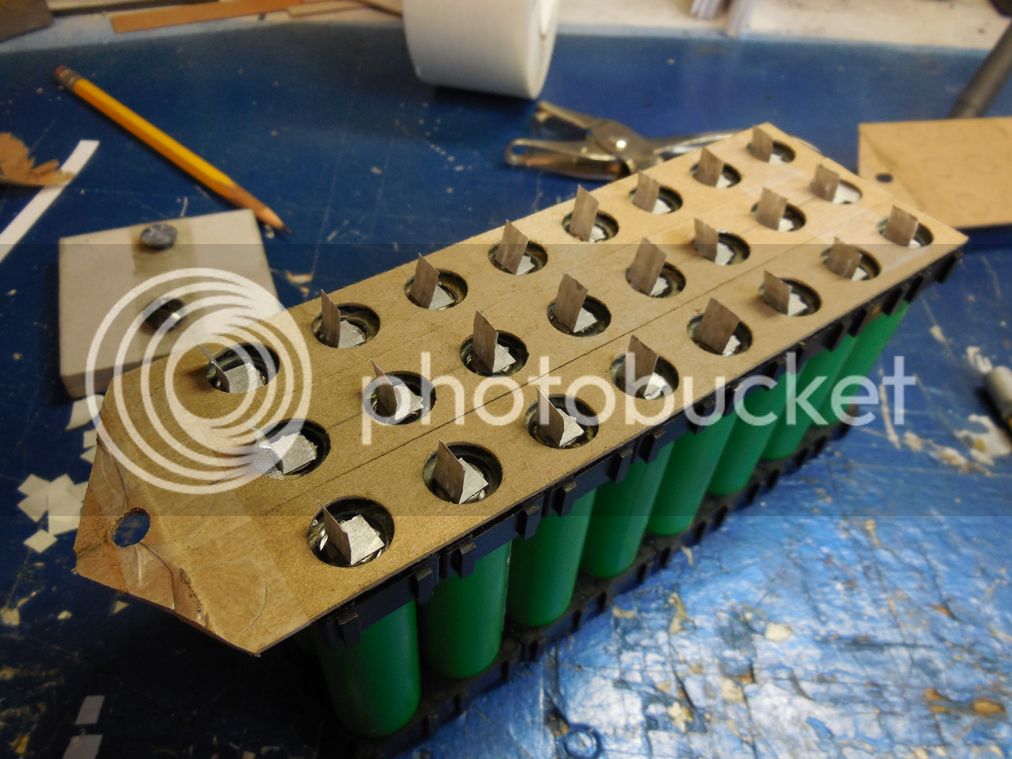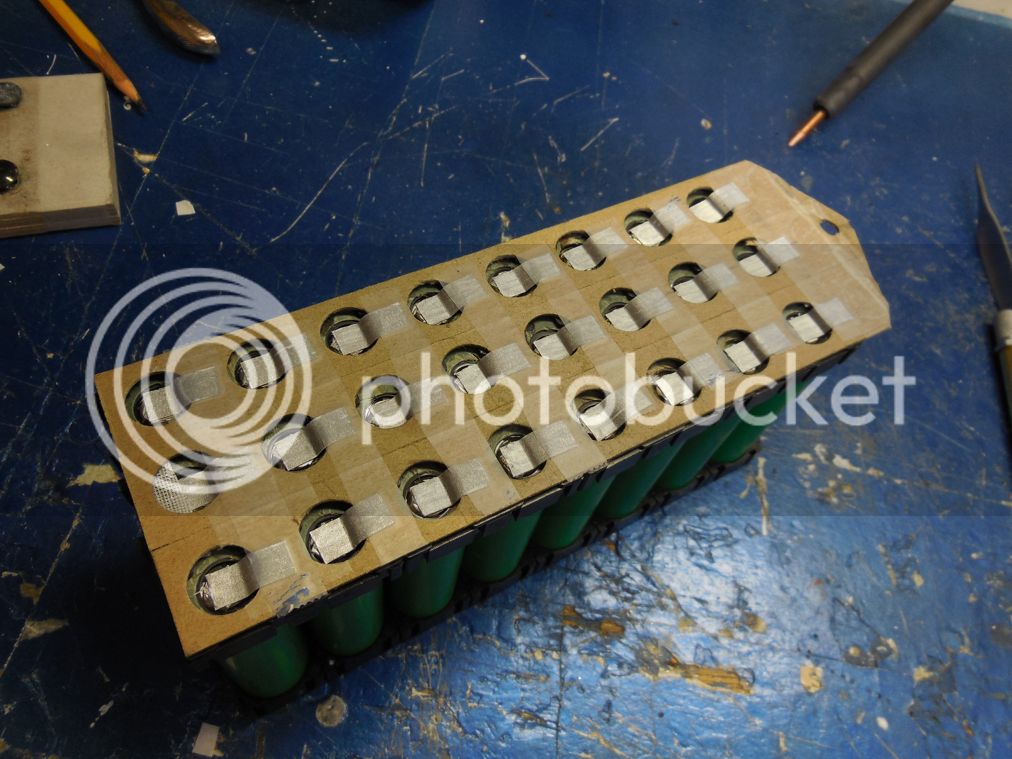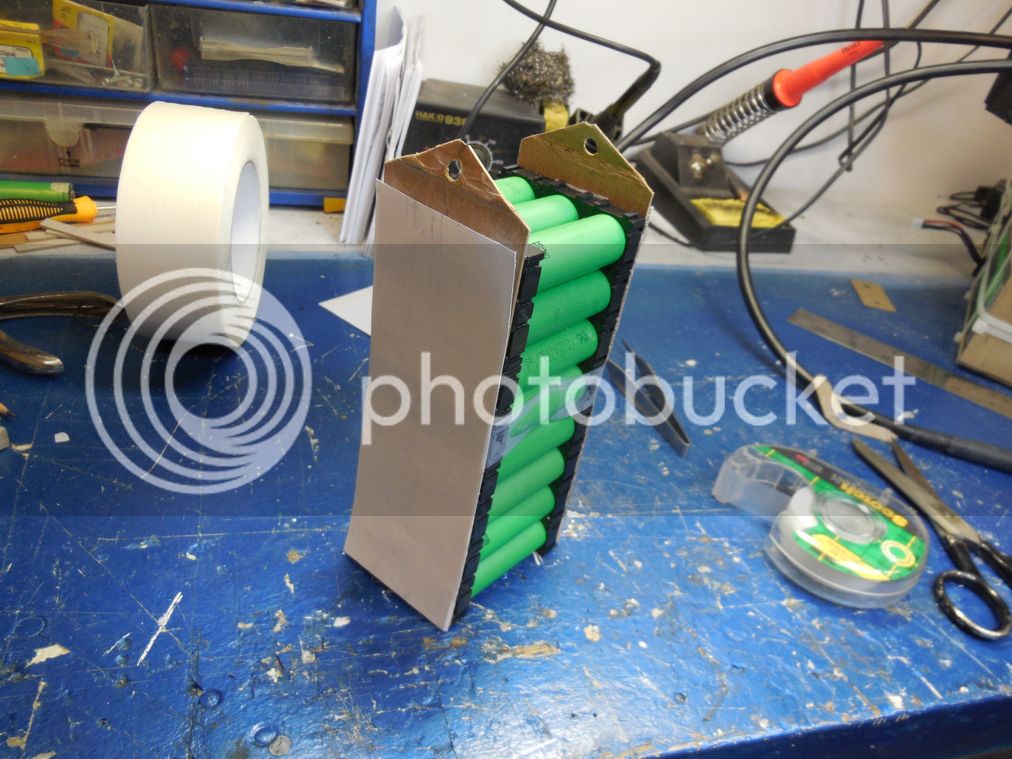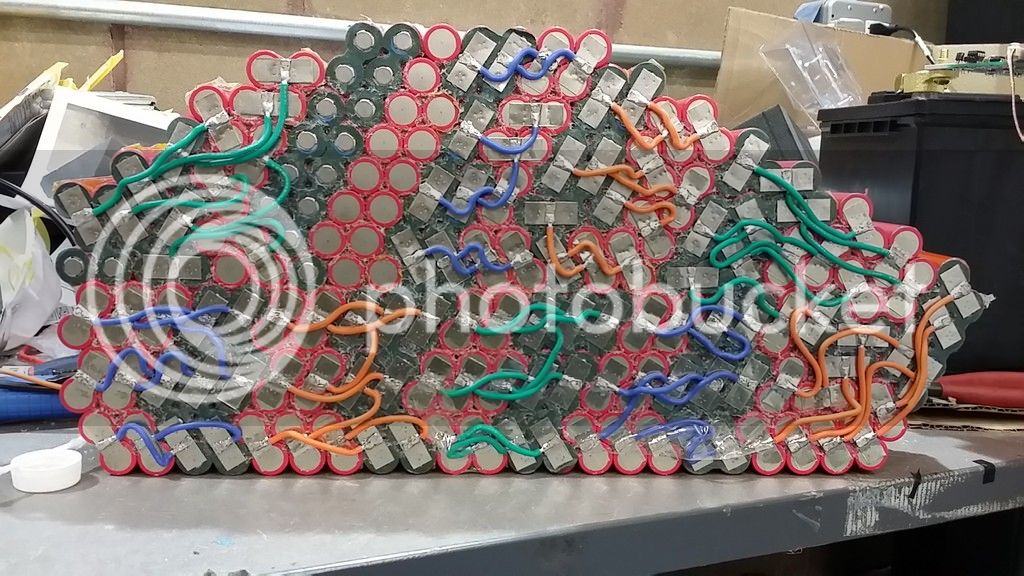Big post with 8 pics. I have been thinking of making large 1S modules with 18650 cells for a long time. I wanted to make them with things that can easily be found on the net and simple tools and a good spot welder. In this case, the pics show a 1S24P module. To demonstrate I used old tool pack Sony Konions, cardboard instead of Copper sheets and paper for Nickel strips and GPO-3 sheets.

This would not be for a bicycle but for something bigger. Motorcycle, car, power station. The principle is the same for any parallel combination. Some will find this similar to the Tesla Model S modules, that's because it is.
First pic, 24 18650 cells in plastic spacers from Supower on ebay.
Then I would cut 15 mm long pieces of 0.15X7 Nickel strip and spot weld them to the cells.
Then I would bend the Nickel pieces upwards 90 degrees, like so:
Then I would put some pieces of double sided tape on the plastic spacers, the pic shows four pieces of stuff used to stick area rugs to the floor.
Then I would put a sheet of 0.0625" Copper cut to the correct dimension with 1/2" holes that align with the cells, slip it over the bent Nickel pieces like so:
Then I would lay the Nickel pieces on the Copper sheet and solder them on the Copper. Shown here with some sticky tape.
Once the other side of the cells is done, I would stick some sheets of 0.031" sheets of GPO-3 Fiberglass reinforced Thermoset Polyester on top of the Copper sheets, demonstrated here by the white sheets of paper.
And finally, heat shrink the module. I like the Turnigy stuff sold by Hobby King, it is tough and thick.
Positive and negative tabs sticking up, easily joined in series with a bolt and nut, tap in with a ring terminal for wires to a BMS. I also thought of shooting expanding foam in between the cells to pot the whole module. I found it easy to spot weld a piece of 0.25 mm thick Copper wire to a cell with my JP Welder, so a thin Copper wire could be used in place of the Nickel strips to have a fuse on every cell.
EDIT: I revised the process, I would put a sheet of GPO3 between the positive side of the cells and the Copper sheet. This way the cardboard rings shown in the pics stuck to the + side of the cells would not be needed. GPO3 is perfect for insulating the Copper from the cells.
http://www.attwater.com/files/product_pdf/GPO3.pdf. I would not put a GPO-3 sheet on the negative side of the module between the Copper and the cells, it's really not needed, and it makes the module a bit smaller. And I would go with simple 0.15mm X 3.5mm Nickel tabs (0.15mm X 7mm split in half) to join the cells to the Copper sheets, it keeps the materials list simple, and I am sure that those tabs would act as a fuse in case of a short within the module. Also I would reduce the size of the holes in the Copper sheets to 1/4'' instead of 1/2''.
Any suggestions to make this better, please share your thoughts.
Thanks
Ray


